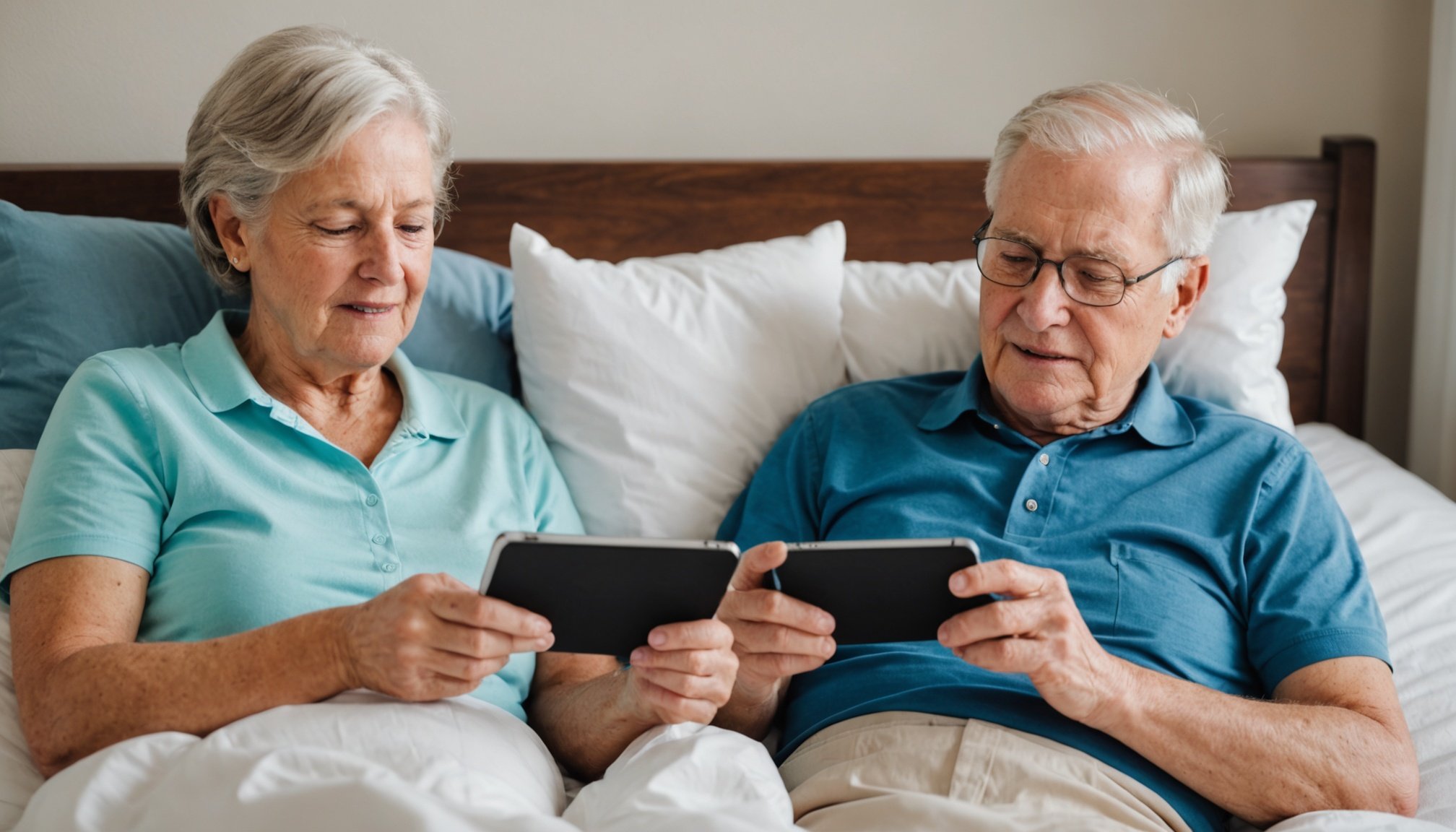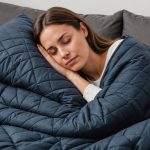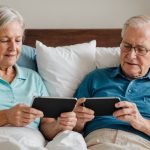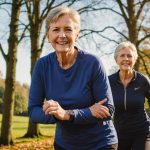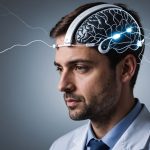Understanding Sleep Quality in Seniors
Sleep quality is crucial for maintaining the health and well-being of seniors. As we age, the importance of sleep becomes more pronounced, often influencing various aspects of daily life. Sleep quality refers to how well one sleeps, encompassing duration, continuity, and depth of sleep. For seniors, achieving quality sleep can be challenging due to changes in sleep patterns and increased prevalence of sleep disorders.
Common sleep disorders among older adults include insomnia, sleep apnea, and restless legs syndrome, all of which contribute to diminished sleep quality. These disorders often lead to fragmented sleep, reducing both physical and mental resilience. Insomnia, for example, can result in prolonged sleep onset or frequent awakenings, leaving seniors feeling unrested.
In the same genre : Empowering Seniors: Unlocking the Benefits of Online Therapy for Mental Well-Being
Poor sleep quality can significantly impact overall health and well-being. It has been associated with a greater risk of chronic conditions such as heart disease, diabetes, and depression. Additionally, inadequate sleep often results in weaker immune function and impaired cognitive abilities, affecting daily functioning.
By identifying and addressing sleep disorders, seniors can improve their overall sleep quality. Interventions such as lifestyle changes, cognitive behavioural therapy, and, in some cases, medication, can be effective solutions in promoting better sleep health. Understanding and prioritising sleep can yield substantial improvements in the lives of seniors.
This might interest you : Empowering Seniors: The Ultimate Guide to Using Telehealth for Routine Medical Check-Ups
Technology’s Role in Enhancing Sleep Quality
Sleep technology has evolved significantly, offering solutions that promise to revolutionize the way we rest. In today’s world, an array of tracking sleep devices is available that not only monitor sleep patterns but also improve overall sleep quality. This technology ranges from wearable gadgets to sophisticated mattress systems and even smart bedroom devices designed to create ideal sleep environments.
The primary benefit of integrating health monitoring into sleep technology is the ability to precisely analyse sleep data. Devices like smartwatches and fitness bands have sensors that detect movements, heart rate, and sometimes even breathing patterns. This data provides insights into sleep stages, disruptions, and overall sleep efficiency.
Moreover, certain sleep technologies offer personalised recommendations, suggesting how one might adjust daily habits for better sleep. This can include changes in diet, physical activity, or even stress management techniques. Equipment like smart speakers can also facilitate calming playlists or adjust room temperature to optimise sleep conditions.
Advancements in sleep technology not only support better sleep but also proactively contribute to overall wellbeing. By understanding sleep behaviour intricately, individuals can effectively manage health, leading to more productive and healthier lives.
Essential Tools and Devices for Better Sleep
Improving sleep quality can significantly enhance overall well-being. Innovative technologies, such as sleep monitoring devices, have become vital in this pursuit.
Wearable Sleep Trackers
Wearable sleep trackers, like smartwatches and fitness bands, are popular choices for individuals seeking insights into sleep patterns. Popular devices, including Fitbit, Garmin, and Oura Ring, provide detailed sleep analysis by tracking parameters such as sleep stages, heart rate, and movement. When choosing a tracker, consider features like battery life, comfort, and compatibility with other sleep aids and apps. User feedback often highlights the effectiveness of these devices in improving sleep awareness and offering actionable insights.
Smartphone Applications
Smartphone apps offer convenient solutions for enhancing sleep quality. Apps like Sleep Cycle and Calm are designed to monitor sleep stages, analyse patterns, and suggest improvements. To effectively use these apps for sleep tracking, ensure your device is close enough to capture movement and sound accurately. However, reliance on apps may lead to distractions from notifications.
Smart Home Integration
Integrating smart home technology can optimise the sleep environment. Smart speakers and lighting systems, like Amazon Echo and Philips Hue, adjust ambiance to encourage rest. Seniors using these devices often report enhanced sleep quality, underscoring the importance of a conducive environment.
Addressing Barriers to Technology Adoption
For many seniors, technology adoption can present numerous challenges. Adjusting to new devices and applications isn’t always straightforward, and issues such as unfamiliar interfaces, complex instructions, and accessibility can be significant hurdles. However, with strategic support and guidance, these obstacles can be effectively addressed.
A primary challenge includes the unfamiliarity with devices designed for younger users with different needs. Tools often lack intuitive designs, leaving seniors bewildered. Moreover, instructions are frequently laden with jargon, making comprehension difficult.
To overcome these barriers, effective strategies include offering tailored education sessions that cater specifically to seniors. Such initiatives should break down technology into digestible segments, and are more impactful when conducted in a hands-on environment. Pairing seniors with patient and knowledgeable individuals or mentors can also enhance learning experiences.
Implementing user-friendly features on devices catered to seniors is another worthwhile step. By minimising complexity and improving accessibility, such modifications can prevent unnecessary frustration.
Overall, providing continuous support and fostering an encouraging atmosphere are critical. By fostering confidence, seniors are more likely to embrace technology, leading to enriched lives and better adoption outcomes.
Case Studies and Testimonials
In exploring the real-life impact of technology on sleep improvement, several compelling case studies stand out, especially among seniors. These individuals often face unique challenges in achieving restorative sleep. Various devices and apps have shown promising results. For example, one case study highlighted a senior who used a sleep tracking app combined with a smart pillow. This combination provided valuable insights into sleep patterns, leading to significant sleep improvement.
User testimonials often provide genuine insights into the effectiveness of these technologies. Many users attest to the transformation these tools have brought into their lives. For instance, a 70-year-old user shared how a particular app helped increase their sleep quality by reminding them of bedtime routines and reducing sleep interruptions.
Community support plays an invaluable role in enhancing the adoption and effectiveness of these technologies. Seniors often rely on shared experiences and recommendations from peers where they can exchange tips and encourage one another. This support system not only aids in overcoming any initial resistance to new technology but also fosters a sense of belonging and shared purpose in their journey toward better sleep. Thus, the user testimonials and community involvement often magnify the benefits of using sleep-enhancing technologies.
Practical Tips for Leveraging Technology
When it comes to enhancing your sleep hygiene, incorporating technology use thoughtfully can make a significant difference. Sleep tips often emphasize routine, but integrating tech can optimize these habits.
First, consider apps designed to improve sleep patterns. These tools can track sleep cycles, provide relaxing soundscapes, and even suggest personalized sleep tips. Implementing these can help create a consistent bedtime routine and improve overall sleep hygiene.
For integrating technology into your daily routine, select smart lights or sleep trackers. Smart lights simulate natural light, encouraging your body to adapt to circadian rhythms. Sleep trackers provide insights into your sleep stages, allowing for a data-driven approach to sleep improvement. To get the best results, regular monitoring of these tools is crucial.
Additionally, emphasising breaks from screens encourages better sleep. Blue light from devices can disrupt sleep, so consider apps that adjust your screen’s light spectrum in the evening. Coupling this with mindful bedtime practices enhances the effectiveness of technology.
Finally, remember that individual needs vary. Regular adjustments and patience are essential for optimizing personal sleep routines using technology. This tailored approach will ensure better rest and refreshed mornings.

